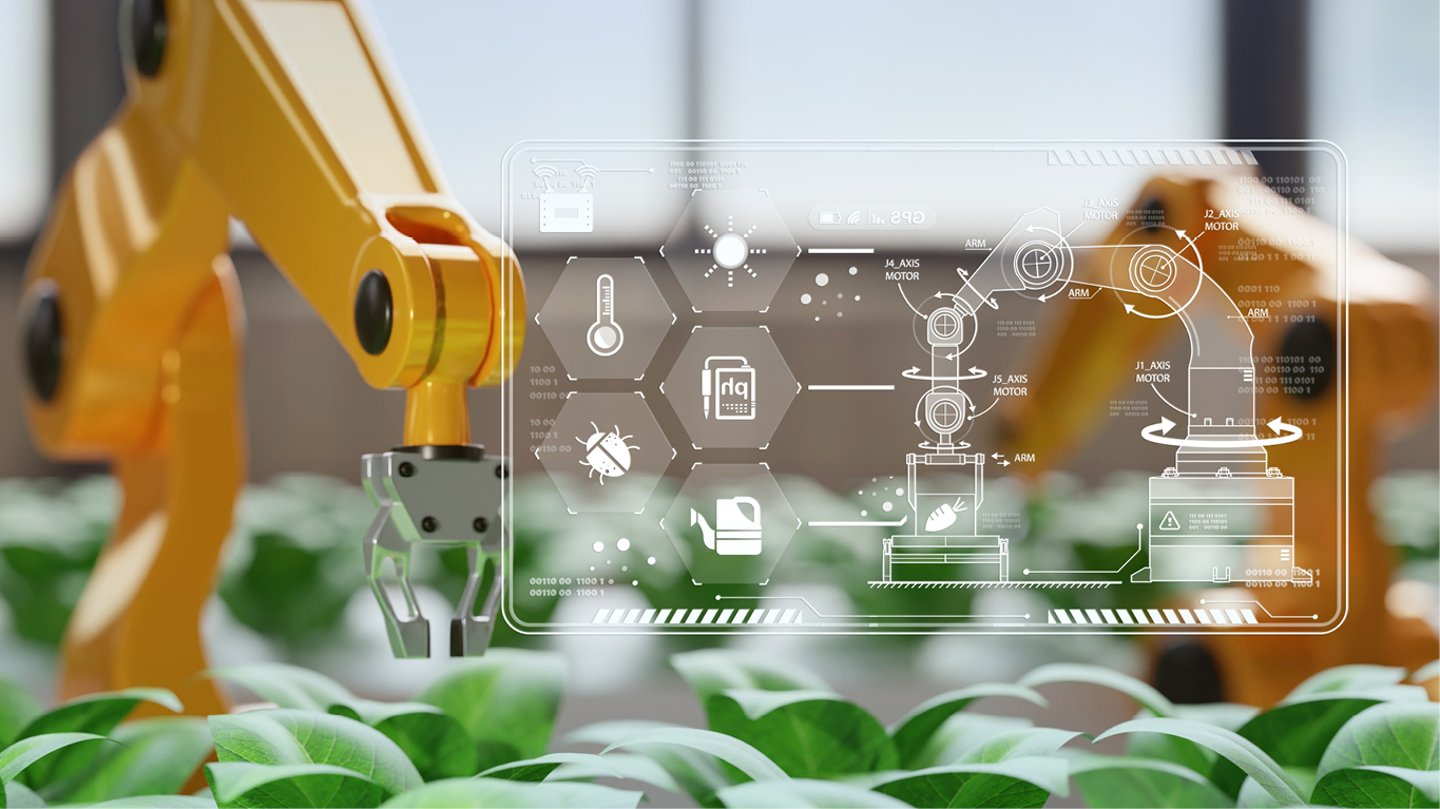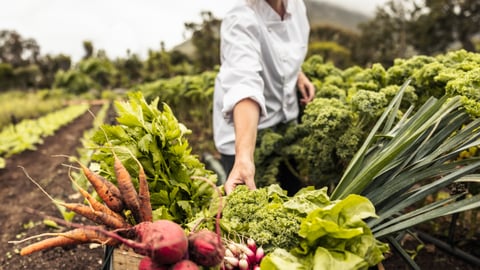How tech is helping produce and profit margins
There have been several major “technology” milestones in the evolution of the grocery business, from Memphis, Tenn.’s Piggly Wiggly becoming the first store to offer self-serve shopping in 1916, to Oklahoma City’s Humpty Dumpty introducing shopping carts in 1937, and the introduction of the self-checkout in 1992.
But today’s technology is transforming the grocery industry unlike anything before. Artificial intelligence (AI), robotics and blockchain, to name a few, are irrevocably reshaping all aspects of the business.
“I think technology will dramatically change the face of retail in the next 10 to 15 years,” predicts Dain Charette, chief revenue officer with Afresh, a San Francisco-based company that uses AI and machine-learning to help grocers optimize their fresh supply chain. “I’m really excited to see it.”
While these advancements are being introduced across multiple store departments, they’re having a seismic impact on the heartbeat of every grocery store: the produce department.
READ: How to prepare your business for artificial intelligence
Perhaps it’s no surprise, given produce’s fragility and short shelf life, that many of the applications seem to be oriented towards reducing waste. Research from Value Chain Management International (VCMI) and Second Harvest estimates the value of avoidable food loss and waste – including things like bruised apples that don’t get sold – in Canada equates to $49.5 billion per year.
A wave of technology companies is committed to tackling the challenges endemic to the growing, harvesting, transportation, and stocking of fruits and vegetables, adding up to what might be the most exciting time in the 12,000-year history of agriculture.
These tech solutions are not only helping the industry reduce food waste, which has become a priority in recent years, they’re also making a material contribution to grocers’ bottom lines – a welcome development in an industry accustomed to operating under razor-thin margins.
Demand forecasting
“The ascendance of AI tools has significantly influenced the landscape of trend forecasting. Fresh Del Monte harnesses tools such as Tastewise, an AI-infused platform dedicated to tracking food and beverage trends,” says Walter Liu, the Florida-based company’s senior director of category management.
“This innovative platform delves into the analysis of social media engagement and evolving menu trends, offering a valuable stream of market intelligence,” Liu explains. “This real-time data serves as a wellspring for fostering innovation, steering marketing strategies and driving sales efforts.”
READ: Canadian Grocer's 2023 Produce Operations Survey: Changing consumer behaviours
Launched in 2017, Afresh is helping grocers make “smarter decisions” throughout their fresh supply chain. The company works with grocers operating more than 3,000 stores across 40 U.S. states, including Albertsons, Heinen’s, Cub and WinCo Foods.
According to Charette, Afresh controls about 13% of produce ordering in the country – up from about 1% a little more than three years ago – and has set a target for about 23% of all fresh, perishable goods ordering in the United States by the end of 2024.
The company is solely focused on the U.S. market right now, but Charette says Canada represents a “logical extension” when it looks to embark on an international expansion strategy.
Afresh uses AI to optimize the traditional grocery supply chain, which uses a simple formula: How much of a product was shipped, minus sales and spoiled inventory. That number is combined with a demand forecast to produce an order recommendation.
Afresh claims to provide its customers with an average sales lift of 3%, a 25% reduction in shrink, and says customers can expect to see a 40% or more increase to their produce operating margins.
The company’s success with its produce technology has led to it expanding its offering to include meat, seafood and deli departments. Charette says adoption for those products looks “very similar” to that of its produce-focused systems.
READ: Canadians' conflicting perspectives on AI in the food industry
Like Afresh, Mississauga, Ont.-based Invafresh is built around managing fresh grocery ordering and forecasting, using real-time data enhanced by AI and its cloud-based Fresh Retail Platform.
Invafresh’s technology is currently being used by more than 300 retailers in 18 countries, with Canadian clients including Sobeys, Loblaw, Federated Co-operatives Limited and The North West Company. The company promises its customers a 40% reduction in shrink, a two-day increase in shelf life, 15% fresh sales growth and $100,000 in realized annual benefits.
“Retailers can leverage prescriptive analytics to determine optimal inventory levels, reduce waste and ensure that popular products are consistently available to customers,” says Invafresh’s vice-president of marketing Stephen Midgley. “Prescriptive analytics also play a key role in reducing food waste across the grocery industry by providing insights into customer behaviour, inventory management and supply chain efficiency.”
But while so many of these technology applications primarily benefit grocers, they can also have a trickledown effect that, ultimately, impacts customers, says Jim Morris, marketing communications manager with Pear Bureau Northwest in Milwaukie, Ore.
Many shoppers have what Morris calls a “buy now, eat now” mentality when it comes to pears, for instance, which invariably leads to dissatisfaction as they end up trying to eat products that have not yet achieved optimal freshness.
A U.K. company called SmartHarvest, though, has introduced Mobile Ripening Units equipped with its proprietary “ripening control system.” It includes LED lighting, ethylene and CO2 sensors, and a chilled water system, enabling the ripening process to begin when the pears are still on the way to their final destination.
“This way, retailers can offer their customers pears that are optimally ripe at the time of purchase, which increases customer satisfaction and, therefore, captures repeat purchase,” explains Morris.
READ: Five ways grocers can win over produce shoppers amid inflation
Ensuring freshness on the often-long journey from tropical climates to North America is a key area of focus among technology providers. Chicago-based Hazel Technologies specializes in what it describes as “shelf-life extension” products that enable a wide variety of produce, ranging from apples (which it describes as its anchor commodity) to avocados, berries and grapes, to better survive the journey from farm to store.
Its flagship product is Hazel 100, a sugar pack-sized sachet that can be tossed into a box of produce for transit to slow down the aging process. Each sachet contains the chemical 1-Methylcyclopropene (or 1-MCP), which reduces the release of ethylene, a natural gas that induces ripening.
Smart packaging
Other companies have developed coating technologies designed to keep foods fresh during transport and beyond. Among them is Boston-based anti-waste company Mori. It uses protein derived from a silk moth to create an all-natural protective layer that is edible and tasteless and capable of keeping the cocooned food fresher for up to twice as long.
Similarly, the California company Apeel applies a microscopic amount of “purified mono- and diglycerides, derived from sustainably sourced, non-GMO plant oils” that mimic the natural protection that already exists on fruits and vegetables. This breathable layer of protection slows spoilage by retaining moisture and keeping oxygen out. Apeel says a typical avocado weighs approximately 200 grams, with Apeel adding only about 0.06 grams.
But, with so many options, the key for grocers is to know which technologies can be additive to their business and which are merely window-dressing.
This article first appeared in Canadian Grocer’s September/October 2023 issue.



